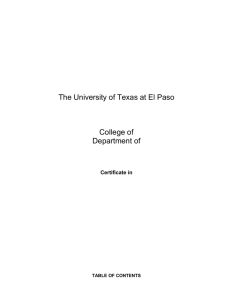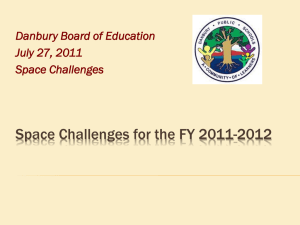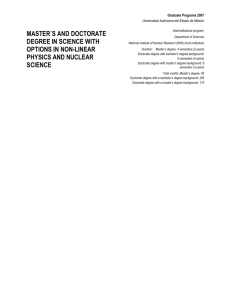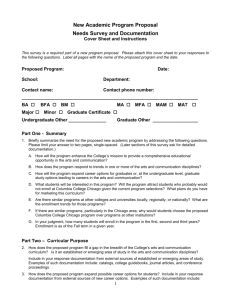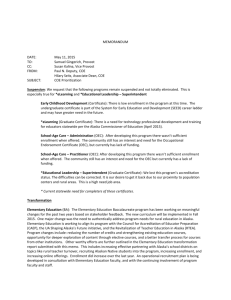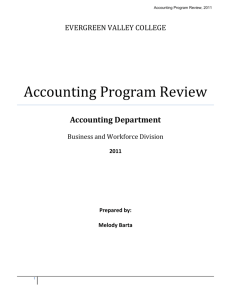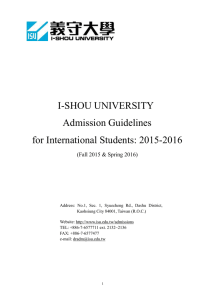Comments & Assumptions
advertisement
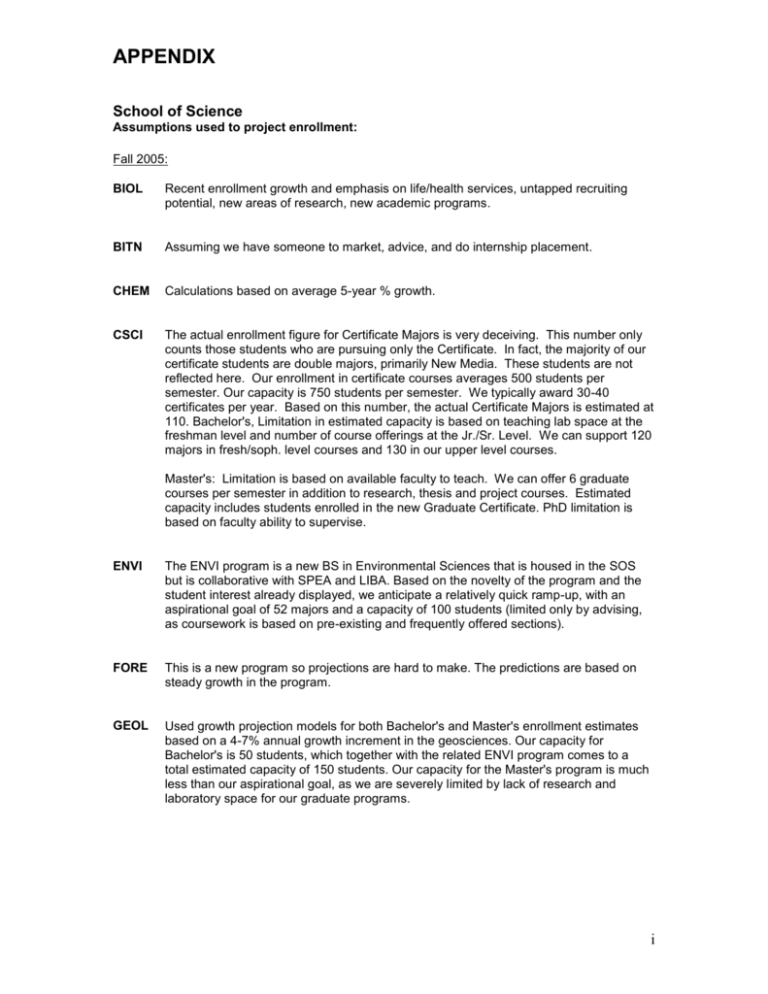
APPENDIX School of Science Assumptions used to project enrollment: Fall 2005: BIOL Recent enrollment growth and emphasis on life/health services, untapped recruiting potential, new areas of research, new academic programs. BITN Assuming we have someone to market, advice, and do internship placement. CHEM Calculations based on average 5-year % growth. CSCI The actual enrollment figure for Certificate Majors is very deceiving. This number only counts those students who are pursuing only the Certificate. In fact, the majority of our certificate students are double majors, primarily New Media. These students are not reflected here. Our enrollment in certificate courses averages 500 students per semester. Our capacity is 750 students per semester. We typically award 30-40 certificates per year. Based on this number, the actual Certificate Majors is estimated at 110. Bachelor's, Limitation in estimated capacity is based on teaching lab space at the freshman level and number of course offerings at the Jr./Sr. Level. We can support 120 majors in fresh/soph. level courses and 130 in our upper level courses. Master's: Limitation is based on available faculty to teach. We can offer 6 graduate courses per semester in addition to research, thesis and project courses. Estimated capacity includes students enrolled in the new Graduate Certificate. PhD limitation is based on faculty ability to supervise. ENVI The ENVI program is a new BS in Environmental Sciences that is housed in the SOS but is collaborative with SPEA and LIBA. Based on the novelty of the program and the student interest already displayed, we anticipate a relatively quick ramp-up, with an aspirational goal of 52 majors and a capacity of 100 students (limited only by advising, as coursework is based on pre-existing and frequently offered sections). FORE This is a new program so projections are hard to make. The predictions are based on steady growth in the program. GEOL Used growth projection models for both Bachelor's and Master's enrollment estimates based on a 4-7% annual growth increment in the geosciences. Our capacity for Bachelor's is 50 students, which together with the related ENVI program comes to a total estimated capacity of 150 students. Our capacity for the Master's program is much less than our aspirational goal, as we are severely limited by lack of research and laboratory space for our graduate programs. i APPENDIX School of Science Assumptions used to project enrollment: MATH To project our bachelor's degree enrollment, we fixed the number slightly higher than the average enrollment over the last 5 years. We believe our master's degree program (Applied Statistics) will continue to stay fairly stable. We are projecting an increase in the number of students in the pre-Purdue programs (all other master's degrees, plus Ph.D.) because of the introduction of a new Ph.D. program in Biostatistics in fall 2007. We believe this program will attract a significant number of students. Also during the next 5 years we will actively attempt to increase the number of pure/applied math Ph.D. students. NOPR We assume these are UGND students seeking career changes. PHYS Projections for Bachelor's based on increased enrollments in Physics courses in high schools, the popularity of the Physics Department's dual degree programs with Engineering departments, and greater efforts in recruiting by the Department. Projections for Masters and Pre-Purdue based on expansion in number of department faculty, prospects for greater external funding to support graduate students. PSYC All projections are based on past data, resources, future plans, and guesswork. Fall 2006: Note: The Undergraduate certificate program in Computer and Information Science actually serves over 100 students. However, since most of these students are also enrolled in a Bachelors degree program, e.g., business, they are not listed here. ii


